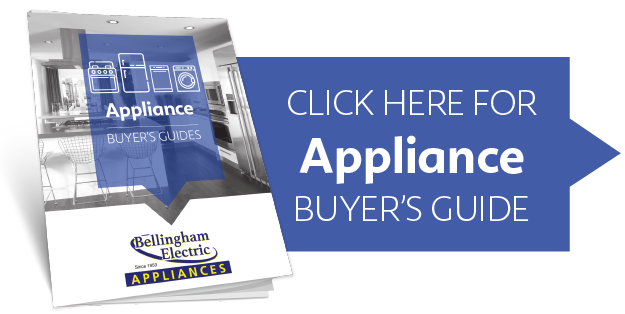
A self cleaning range may seem like an obvious choice for today's hectic lifestyle. For many consumers, it is! Cleaning the inside of an oven can be a frustrating and time consuming job. Owning a self cleaning range can significantly reduce the hassle of cleaning all the caked-on food that builds up inside your range from the inevitable spills and splatters that result from cooking. As you are doing research for your next range, be sure to look at self cleaning range models as part of your search (and for more info on choosing a new gas or electric range, check out our range buying guide). Let's take a closer look.
Table of Contents
- How Does a Self Clean Oven Work?
- Pros & Cons of a Self Clean Oven
- Caution: Don't Over-Rely on the Self Clean Cycle
- How to Run the Self Clean Cycle
How Does a Self Clean Oven Work?
Self cleaning ranges were first introduced in the 1960s. These ranges have a few important features that their non self cleaning range counterparts do not have:
-
A special enamel coating that helps loosen caked-on food from the surface during cleaning
-
The ability to reach temperatures over 900 degrees - non self cleaning ranges can't do this as no food is ever cooked at 900 degrees!
The self cleaning cycle itself typically runs two to three hours. During the cycle, the range will be locked and will heat to an extremely high temperature inside, essentially cleaning the range by burning all the stains away. At the end of the cycle, you'll simply need to clean out all the ash from the interior and then touch-up clean any final stains.
Pros & Cons of a Self Clean Oven
Pros:
-
Eliminates the need for heavy hand scrubbing of interior
-
No need for harsh chemicals with noxious fumes
-
Time saver, as the oven essentially does most of the cleaning itself
-
Powerful cleaning cycle can remove food that would be difficult to remove otherwise
- Reaches every corner of the oven, including the sides and corners, which is hard to do by hand
Cons:
-
High energy consumption to heat the range to extremely high temperatures
-
Takes several hours
-
May cause unpleasant odor from food being incinerated
-
Fumes can be deadly for birds, as well as problematic for people with respiratory issues like asthma
-
Range becomes very hot, even on the exterior
-
Some work is still required to clean up residual debris after cycle
- It's hard on the appliance and should not be overused
Caution: Don't Over-Rely on the Self Clean Cycle
It turns out that we can't completely eliminate elbow grease from oven cleaning just yet! One common issue we see with self cleaning ranges is that consumers rely too heavily on the self cleaning cycle and don't do enough regular maintenance-type cleaning on their range in between self cleans.
Regular light cleaning of the oven can go a long way to making the self cleaning cycle more effective. Some customers don't clean their range all year and then turn the self clean on the day before Thanksgiving or another big cooking event... which can result in a stinky, smoky kitchen as too much debris has built up in the oven. Don't fall victim to this! Regular cleaning goes a long way. Some housekeeping resources recommend wiping down the oven weekly and doing a more thorough clean every 6 or so months, depending on how heavily the oven is used. All you need is hot, soapy water and a plastic scrub pad.
Additionally, it's worth emphasizing that the self clean cycle is tough on your appliance. It's intensely high heat for several hours! Imagine flooring the accelerator on your car and then... holding it there for an hour or two! Older ranges are especially vulnerable to problems caused by the strain of the self clean cycle, such as killing the control panel or the heating element. When we receive service calls for ovens, it's not unusual to hear that the customer had just run the self clean cycle before having issues. Use the shortest cleaning cycle duration available and consider elbow grease where possible.
One option that can make this weekly maintenance easier is a steam clean cycle. Some ovens come with both steam and self clean! The steam clean cycle is a lighter-duty cycle that is usually about 30 minutes long and runs at under 300 degrees.
How to Run the Self Clean Cycle
Check your owner's manual for details, but here are the basics:
-
Remove the oven racks (unless your owner's manual states they are self clean safe).
-
Wipe down the oven interior and scrub away debris where possible.
-
Clear off the stovetop and make sure the oven vent isn't blocked.
-
The self-clean option is usually clearly labeled on the control panel. If the stove comes with multiple durations for the cycle, choose the shortest one.
-
To help with fumes and smoke, keep your range hood running through the self clean cycle as well.
We hope you enjoyed this discussion of self cleaning ranges. Let us know what kind of range you end up purchasing. We’d love to hear from you!
Editor's Note: This blog was originally written in March of 2018 and has been completely revamped and updated for accuracy as of the publication date noted above.




